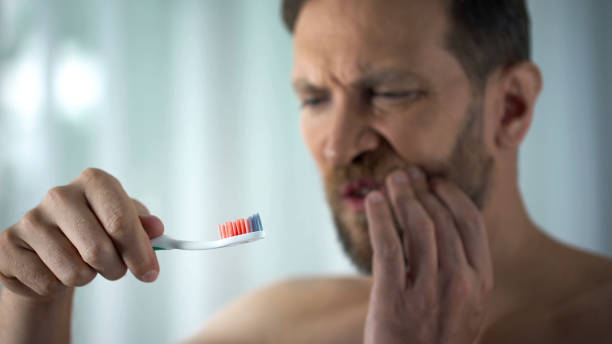Dental pain can strike at the worst time on weekends, during holidays, or just before a big event. Knowing when to seek help from an emergency dentist Miami Village can prevent serious complications.
What Counts as a Dental Emergency?
A dental emergency involves sudden pain, trauma, or an issue that could worsen without fast treatment. Early action reduces long-term damage and keeps costs lower.
Common Signs You Need Emergency Dental Care
Not all dental problems need urgent attention, but the following symptoms often do:
- Severe toothache that doesn’t go away
- Bleeding gums that won’t stop
- Swelling in the mouth or jaw
- Cracked, chipped, or knocked-out tooth
- Loose adult tooth
- Signs of infection (bad taste, pus, fever)
If you’re unsure, it’s best to contact an emergency dentist for guidance.
A Checklist for Identifying Dental Emergencies
Dental emergencies can happen suddenly and without warning. But knowing when a situation is urgent—and how to respond—can make a critical difference. Use this simple checklist to evaluate whether you’re facing a true dental emergency and need immediate attention.
Emergency Dental Checklist:
-
Severe pain interfering with sleep or daily activities
If your toothache is intense enough to prevent you from eating, working, or sleeping, it’s a clear sign that something serious is happening—possibly an infection, nerve damage, or abscess. -
Tooth injury following a fall or direct impact
Sports injuries, accidents, or biting down on something hard can cause a tooth to break, loosen, or fall out completely. These events require urgent dental attention. -
Bleeding that lasts longer than 10 minutes
While mild gum bleeding can occur after brushing or flossing, uncontrolled bleeding—especially after trauma—signals a serious issue that needs fast care. -
Facial swelling or difficulty swallowing/breathing
These symptoms could indicate a deep infection or abscess. If left untreated, the infection may spread to other parts of the body or affect your ability to breathe. -
Lost dental crown or filling with sharp pain or exposed nerves
When a crown or filling falls out, it can expose sensitive inner layers of the tooth. This often causes severe sensitivity or shooting pain.
If you checked one or more of these boxes, it’s time to seek emergency dental care immediately.
What to Do Before You Reach the Clinic
While you wait to see your emergency dentist, taking some initial steps can help reduce discomfort and limit further damage:
-
Knocked-out tooth: Pick up the tooth by the crown (not the root), rinse gently, and place it in milk or saliva to keep it moist. Get to the dentist within an hour if possible.
-
Toothache: Rinse your mouth with warm saltwater to reduce bacteria and inflammation. Apply a cold compress to the cheek to minimize swelling and ease the pain.
-
Bleeding: Use a clean piece of gauze or a tea bag and apply gentle pressure to the bleeding site. Sit upright to reduce blood pressure to the head.
-
Swelling: Apply an ice pack to the outside of your cheek. Avoid lying down, which can worsen swelling.
These aren’t permanent solutions, but they can provide temporary relief while you’re en route to the clinic.
Why Fast Treatment Matters
Delaying treatment for dental emergencies increases the risk of complications such as permanent tooth loss, severe infections, or even systemic illness if bacteria enter the bloodstream. The faster you act, the better your outcome. Emergency dentists are trained to stabilize your condition, relieve pain, and preserve your oral health.
Final Thoughts
Recognizing a dental emergency early—and knowing how to respond—can make all the difference. Use the checklist as your guide, act quickly, and don’t hesitate to reach out to a trusted emergency dentist. Protecting your smile starts with being prepared.
FAQs
- Can I go to the emergency room for tooth pain?
Hospitals can provide pain relief, but only a dentist can treat the source of dental issues. - How fast should I see a dentist after knocking out a tooth?
Within 30 minutes is ideal for the best chance of saving the tooth. - Is swelling in the face a dental emergency?
Yes, facial swelling could indicate infection and should be treated quickly.
- When Should You Visit an Emergency Dentist? A Clear Checklist
- Not sure when to see an emergency dentist? Use this clear checklist to identify urgent dental issues and get fast, effective care when it matters most.
- dentist
Related posts:
 Empowering Senior Living: A Comprehensive Look at Elder Care Services in India
Empowering Senior Living: A Comprehensive Look at Elder Care Services in India
 Inside the Mind of Jack Allen: Crafting Military Thrillers That Grip You
Inside the Mind of Jack Allen: Crafting Military Thrillers That Grip You
 Eye Hospitals in Visakhapatnam: Advancing Vision Care in Coastal Andhra
Eye Hospitals in Visakhapatnam: Advancing Vision Care in Coastal Andhra
 What Happens If I Stop Getting Anti-Wrinkle Treatments? – Learn
What Happens If I Stop Getting Anti-Wrinkle Treatments? – Learn
 Nature’s Wrap: Exploring the Biodegradable Packaging Revolution
Nature’s Wrap: Exploring the Biodegradable Packaging Revolution
 Ashtanga Hridayam Book : The Essence of Ayurveda with CSS Banaras
Ashtanga Hridayam Book : The Essence of Ayurveda with CSS Banaras
 Dentist in Largo Florida – Expert Care with a Personal Touch at Blue Dental Largo
Dentist in Largo Florida – Expert Care with a Personal Touch at Blue Dental Largo
 What Are Common Myths About Laser Vaginal Tightening Treatment?
What Are Common Myths About Laser Vaginal Tightening Treatment?







